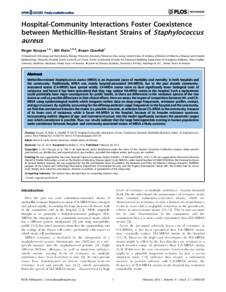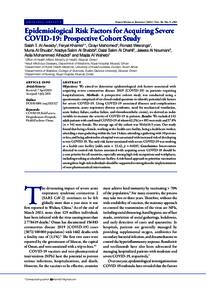وثيقة
Comparison of methicillin resistant Staphylococcus aureus in healthy community hospital visitors[CA-MRSA] and hospital staff [HA-MRSA].
المعرف
DOI: 10.1371/journal.ppat.1003134
المساهمون
Klein, Eili., مؤلف
Grenfell, Bryan., مؤلف
الناشر
Plos Pathog.
ميلادي
2013-02
اللغة
الأنجليزية
الملخص الإنجليزي
Methicillin-resistant Staphylococcus aureus (MRSA) is an important cause of morbidity and mortality in both hospitals and the community. Traditionally, MRSA was mainly hospital-associated (HA-MRSA), but in the past decade community-associated strains (CA-MRSA) have spread widely. CA-MRSA strains seem to have significantly lower biological costs of resistance, and hence it has been speculated that they may replace HA-MRSA strains in the hospital. Such a replacement could potentially have major consequences for public health, as there are differences in the resistance spectra of the two strains as well as possible differences in their clinical effects. Here we assess the impact of competition between HA- and CA-MRSA using epidemiological models which integrate realistic data on drug-usage frequencies, resistance profiles, contact, and age structures. By explicitly accounting for the differing antibiotic usage frequencies in the hospital and the community, we find that coexistence between the strains is a possible outcome, as selection favors CA-MRSA in the community, because of its lower cost of resistance, while it favors HA-MRSA in the hospital, because of its broader resistance spectrum. Incorporating realistic degrees of age- and treatment-structure into the model significantly increases the parameter ranges over which coexistence is possible. Thus, our results indicate that the large heterogeneities existing in human populations make coexistence between hospital- and community-associated strains of MRSA a likely outcome.
المجموعة
ISSN
2346-8619
URL المصدر
قالب العنصر
مقالات الدوريات


